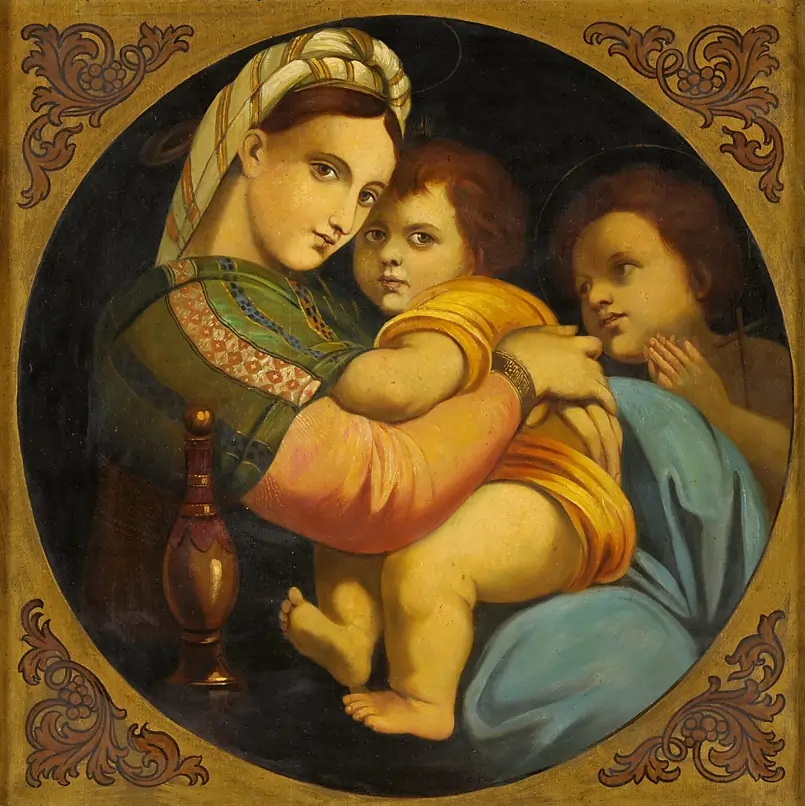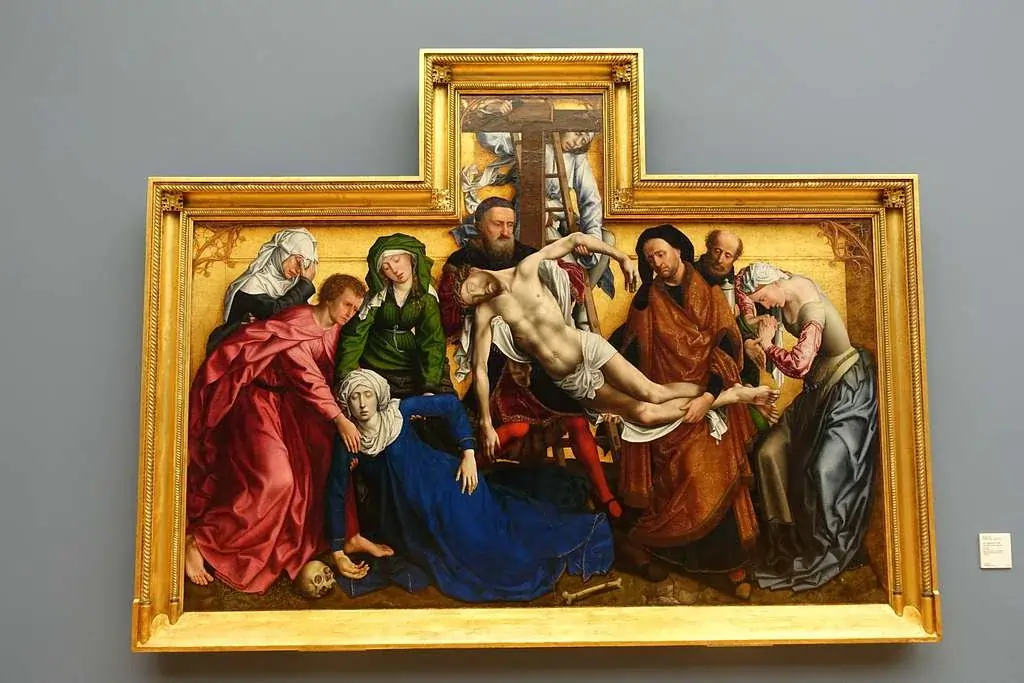Famous artworks depicting Perseus freeing Andromeda often portray an act of rescue involving a valiant warrior and a damsel, in distress chained up against a menacing sea creatures backdrop; nonetheless; these exceptional pieces of art merely scratch the surface of this intricate mythological tale.
Throughout history and in artworks depicting Perseus journey of rescue stands out prominently; however often overlooked are the underlying psychological conflicts, within the family dynamics and societal tensions that truly enhance the complexity of this mythological tales intrigue and captivation heretofore unexplored, by traditional artists portrayals.
The Psychological Depths behind the Myth
I find that beneath the dramatic rescue scene lies a fascinating psychological landscape that most Perseus artwork never captures. The myth reveals what psychologists now call the “Andromeda Complex” – a psychological syndrome where women unconsciously wait for rescue rather than taking action.
Understanding Andromeda’s trauma and resilience
When we look deeper, Andromeda’s experience shows clear signs of trauma. Research indicates this complex can lead to significant psychological consequences, including:
- Reduced life satisfaction
- Limited relationships
- Restricted personal growth
- Decreased self-confidence
Furthermore, I see how Andromeda’s silent endurance of being chained to the rock speaks to a deeper pattern of feminine resilience in the face of parental betrayal.
Perseus’s hero complex explored
Indeed, Perseus’s immediate captivation with Andromeda’s beauty reveals interesting psychological motivations. As soon as he spotted her chained to the rock, he was “moved by her beauty and courage”. I notice how this instant attraction suggests more than just heroic impulse – it demonstrates what psychologists identify as a savior complex intertwined with romantic desire.
The complex family dynamics at play
Consequently, the family relationships in this myth are particularly revealing. Queen Cassiopeia’s fatal pride in claiming her daughter’s beauty surpassed the divine Nereids showcases a complex mother-daughter dynamic. Additionally, King Cepheus’s willingness to sacrifice his daughter to save his kingdom exposes the harsh realities of patriarchal power structures.
The psychological impact runs deep, as research shows this complex often results in women “refraining from struggling in the face of difficulties” and “waiting in silence”. Through my analysis, I’ve found that their eventual marriage and peaceful life together suggests a resolution of these psychological tensions, though the underlying patterns continue to influence cultural narratives today.
Hidden Symbolism of Female Agency
Looking at classical perseus artwork through a feminist lens, I notice a striking paradox in how artists portrayed Andromeda. Above all, her name literally means “Ruler of Men”, yet traditional paintings consistently show her as powerless and submissive.
Andromeda’s silent strength
I’ve observed that beneath the surface narrative of helplessness lies a more complex story. While artists portrayed her as “bound and helpless”, her silent endurance speaks volumes. Consider these aspects of her hidden power:
- Her beauty becomes a source of both curse and salvation
- Her resilience in facing sacrifice shows remarkable courage
- Her eventual role as mother of seven children demonstrates her generative power
The mother-daughter relationship
Moreover, I find the relationship between Andromeda and Cassiopeia particularly revealing. The mother’s boast about her daughter’s beauty sets off a chain of events that exposes the complex dynamics of maternal pride and sacrifice. Nonetheless, this relationship goes deeper than mere vanity – it reflects the broader struggles of women in patriarchal societies.
Breaking free from patriarchal bonds
Similarly, I see how the myth subtly challenges patriarchal authority. While most artists chose “the moment after the hero Perseus has killed Medusa and is preparing to slay the dragon”, they missed the deeper symbolism. The chains binding Andromeda represent more than physical restraints – they symbolize the societal bonds that limited women’s agency.
In examining various artistic depictions, I’ve noticed how male artists provided a “veneer of charity” over themes of “aggression and possession”. Correspondingly, this reflects broader patterns of how society viewed women’s roles and rights. The myth, therefore, serves as a powerful metaphor for the ways women throughout history have found strength within seemingly powerless situations.
Untold Emotional Narratives
In examining the emotional layers of Perseus freeing Andromeda, I’ve discovered that ancient Greek monsters served as powerful metaphors for deeper societal anxieties.
The monster as a metaphor for societal fears
Specifically, I see how the sea monster Cetus represents more than just a physical threat. Ancient Greeks used mythological monsters to explain:
- Cultural anxieties about the unknown
- Fears about social disorder
- Concerns about divine punishment
- Struggles between civilization and nature
Love versus duty in classical mythology
Accordingly, I’ve found that the tension between love and duty runs deep in this narrative. Just as Alcestis faced the ultimate choice between love and duty, Andromeda’s story presents a complex web of obligations. Her parents’ duty to their kingdom conflicts with their love for their daughter, subsequently leading to her sacrifice.
The price of beauty and sacrifice
Altogether, I notice how beauty becomes both a blessing and a curse in this tale. Certainly, Andromeda’s beauty attracts Perseus’s attention, but it also triggers the chain of events leading to her ordeal. The myth generally portrays female beauty as “both enchanting and dangerous”, a theme that resonates throughout classical mythology.
What fascinates me most is how this narrative explores the price of sacrifice. In ancient Greek understanding, these stories served as windows into human nature, revealing the complex emotional landscape beneath surface-level heroics. Through my analysis of perseus artwork and literature, I’ve observed that while artists focused on the dramatic rescue, they often missed the deeper emotional cost of sacrifice that the myth explores.
Voices Left Unheard
Initially, I want to explore the voices that perseus artwork traditionally silences. Through my research of classical depictions, I’ve uncovered fascinating perspectives that most artists overlooked.
The perspective of Queen Cassiopeia
Notably, Queen Cassiopeia’s story is more complex than mere vanity. As a mother, she faced an impossible choice when Poseidon demanded her daughter’s sacrifice. I’ve found that while artists often portrayed her as simply proud, her boast about Andromeda’s beauty might have stemmed from maternal pride rather than personal vanity. Essentially, her actions reflect the impossible standards placed on women in positions of power.
The monster’s symbolic significance
The sea monster Cetus represents more than just a physical threat. In analyzing various artistic interpretations, I’ve discovered that the monster symbolizes:
- Divine retribution against mortal pride
- The clash between natural and social order
- Patriarchal power structures
- Societal fears of female beauty and agency
The silent witnesses of the rescue
Undeniably, the most overlooked aspects of this myth are the silent witnesses. Ancient accounts mention several groups present during this dramatic scene:
- The Aethiopian people watching their princess’s fate
- The Florentine elite portrayed as background characters
- The Nereids, whose beauty sparked the conflict
- The common people whose voices went unrecorded
What fascinates me most is how artists consistently depicted Andromeda through a specific cultural lens, despite her Ethiopian origins. This artistic choice reflects broader societal attitudes about beauty and power. In examining various perseus artwork, I notice how these unheard voices could have offered valuable perspectives on themes of sacrifice, divine justice, and social hierarchy.
Conclusion
Through my deep dive into the Perseus and Andromeda myth, I’ve discovered that famous paintings tell merely a fraction of this rich story. While artists captured the dramatic rescue scene, they missed the complex psychological drama, family tensions, and social dynamics that make this tale truly compelling.
The myth speaks volumes about trauma and resilience, particularly through Andromeda’s experience. Her story, though often simplified in art, actually reveals profound insights about power structures and feminine strength. Most significantly, the untold perspectives – from Queen Cassiopeia’s maternal dilemma to the symbolic meaning of the monster Cetus – add layers of meaning that traditional artists never explored.
These hidden narratives challenge us to look beyond surface-level heroics and consider the deeper human elements at play. The psychological complexities, emotional costs, and unheard voices remind us that ancient myths still hold relevant truths about human nature, society, and power dynamics.
Rather than simply viewing this as a tale of heroic rescue, I now see it as a mirror reflecting timeless themes of sacrifice, resilience, and the complex interplay between personal agency and societal constraints. This deeper understanding transforms the Perseus-Andromeda myth from a simple rescue narrative into a rich exploration of human psychology and social dynamics that still resonates today.
FAQs
Q1. What is the psychological significance of the Perseus and Andromeda myth? The myth reveals the “Andromeda Complex,” where women unconsciously wait for rescue. It explores themes of trauma, resilience, and the hero complex, showcasing complex family dynamics and societal power structures.
Q2. How does the myth of Perseus and Andromeda challenge traditional gender roles? While often portrayed as helpless, Andromeda’s name means “Ruler of Men,” suggesting hidden strength. The myth subtly challenges patriarchal authority and serves as a metaphor for women finding power within seemingly powerless situations.
Q3. What deeper symbolism does the sea monster represent in the story? The sea monster Cetus symbolizes more than just a physical threat. It represents societal fears, divine retribution against mortal pride, the clash between natural and social order, and broader anxieties about the unknown in ancient Greek culture.
Q4. How does the myth explore the concept of beauty? The story portrays beauty as both a blessing and a curse. Andromeda’s beauty attracts Perseus but also triggers her ordeal. The myth reflects the complex perception of female beauty in classical mythology as both enchanting and potentially dangerous.
Q5. What perspectives are often overlooked in artistic depictions of the myth? Traditional artwork often neglects the viewpoints of Queen Cassiopeia, the symbolic significance of the monster, and the silent witnesses to the rescue. These unheard voices could offer valuable insights into themes of sacrifice, divine justice, and social hierarchy.



